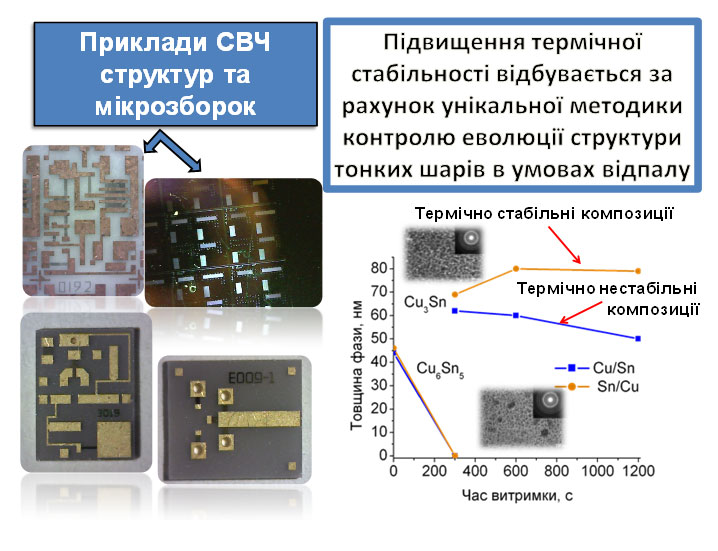Thermal stability and operating reliability of nanosized metal films on insulators and semi-conductors
A comprehensive scientific approach to account for the "cross-effects" influence of physical and thermal deposition process parameters on structure and properties of nanoscale metal films Cu-Sn, Cu-Au, Cu-Mn, Cu-Sn-Mn, Al-Mn-Cr, Ni- Al, Ni-Au, Ti-Ag, Fe-Pt, and etc has been developed. The general regularities of diffusion processes due to subsequent thermal annealing in ultra-high vacuum, oxygen- and hydrogen containing atmosphere, ion-plasma and laser treatment have been discovered. The role of nanoscale factor, interdependent processes reactive multiphase diffusion, ordering, pore formation, the formation of oxide layers, the surface morphology changes and their influence on the thermal stability and the electrical properties have been established. Developed theoretical ideas concerning the mechanisms and kinetics of thermally-induced self- and heterodiffusion and specific effects due to inversion layers of materials have been found together with the influence of additional surface and deposited barrier layers and so on. The process oxide and hydrade formation on the outer surface thermodynamically determines regularities of phase formation in the bulk; on this basis the phenomenological and analytical models of diffusion in multilayer film compositions were developed. «Ab initio» approaches, Car-Parinello molecular dynamics, kinetic Monte Carlo model for the purpose of computer simulation and optimization of the studied processes have been applied. A materials science criteria for determining the heat treatment that enables increased thermal stability of nanoscale metal contacts as part of microelectronic devices with a higher degree of integration, density mounting, performance and reliability have been suggested.

| Attachment | Size |
|---|---|
| 536.53 KB |




